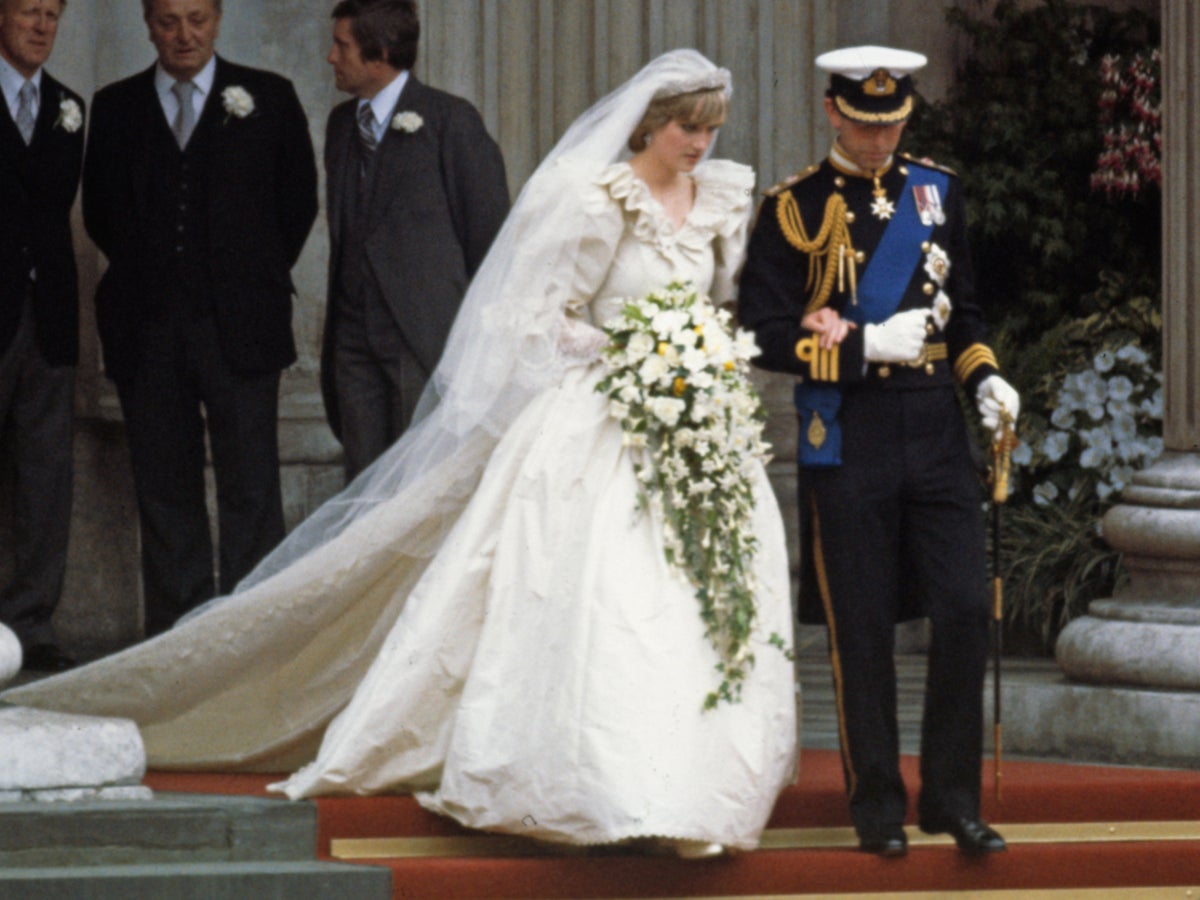
Irish President Patrick Hillery’s decision to decline an invitation to the wedding of Charles and Diana prompted concerns from Irish government officials.
The invitation was sent to Mr Hillery and his wife for the wedding on 29 July 1981 in St Paul’s Cathedral, and requested a reply by 26 June.
A briefing note on how to respond to the invite is among the State documents released by the Department of Foreign Affairs to the National Archives this year.
It asked whether the reply should be issued after the Irish general election, or would it be “discourteous” to do so, while also noting that sending a reply too soon after the invite could also be “discourteous”.
The note also ponders that since it is a “negative” reply, “it would seem desirable to offer a diplomatic excuse”, as no decent reason being given could be “misinterpreted both domestically and internationally”.
“The press will certainly ask the reason for the non-attendance.”
The document also weighed up the pros and cons of attending the wedding, noting that an invite from a “friendly” country to an occasion “such as this” should be accepted, but adding that the Irish President would attract “unfavourable” comment if he did attend.
The wedding invitations were issued a month after IRA prisoner Bobby Sands died after a 66-day-long hunger strike, as part of a campaign to be treated as a political prisoner.
“The present state of Anglo-Irish relations, and specifically the very general feeling of dissatisfaction in both the north and the south with the British government’s policy on prison conditions in Northern Ireland would ensure that there would be much unfavourable comment if the president were to attend the royal wedding,” the document said.
It added that with the “appropriate diplomatic excuse”, a refusal of the Irish president’s attendance would not “impair the political dialogue with London”.
On 26 June 1981, the final date by which the RSVP was to be given, Ireland’s ambassador to the UK conveyed the Irish president’s thanks for the wedding invite but expressed “their regret that, because of prior commitments, they will be unable to attend”.
“They have instructed that the ambassador should represent them on this occasion,” it added.
A separate file published in the archive this year said that Diana, Princess of Wales, showed “obvious ignorance of, or disregard for, constitutional niceties” in relation to Northern Ireland, according to a note from the Irish ambassador in 1993.
Irish President Patrick Hillery declined invitation to royal wedding— (PA)
The late princess had referred to Northern Ireland as part of Ireland in an interaction which was noted ahead of a historic visit by then-Irish president Mary Robinson to Buckingham Palace.
The meeting in May 1993 would mark the first time a serving president of Ireland visited the United Kingdom, and visited Queen Elizabeth II.
A folder with briefing material for the Irish president ahead of the visit includes a note by the Irish ambassador in London, Joseph Small, where he stated that the princess royal had visited Ireland in a private capacity for equestrian functions.
“Whenever we meet Prince Charles, he invariably says that he would love to visit Ireland,” Mr Small’s briefing note dated 21 May 1993 said.
“He is, of course, a regular visit to Northern Ireland (sic). Princess Diana has also been there.
“Early last year she said to me, with obvious ignorance of or disregard for constitutional niceties: ‘I was in your country yesterday!’”
The briefing note also detailed the latest political situation in the UK, included notes on the Irish diaspora in the UK, and on the royal family ahead of what would become a significant visit as Anglo-Irish relations deepened.
Mrs Robinson’s visit to London was planned for 26-28 May, where she was to receive the degree of doctor of civil law by diploma from the University of Oxford, become an honorary fellow of Hertford College, Oxford, and present the Irish Post Awards that celebrate the Irish in Britain.
On the second day of the trip at 5pm, Mrs Robinson was to “pay a courtesy call” to Queen Elizabeth II in response to an invite from the monarch.
Among the topics noted for possible discussion between Mrs Robinson and Queen Elizabeth II was Northern Ireland, bombing atrocities in the region and in Britain, cross-border issues and general relations between Ireland and the UK.
Also noted were Mrs Robinson’s appreciation of “her response re Somalia” and her “concerns” regarding Sudan and Yugoslavia and the “British UN military involvement”.
The meeting was scheduled to last around 40 minutes, where tea and light refreshments were to be served.
Mr Robinson also attended the engagement, while the Duke of Edinburgh was in Liverpool attending the anniversary of the Battle of the Atlantic.
An observer wrote to the president’s office before the visit and noted some parallels with “the last meeting between an Irish woman leader and a British monarch”.
The writer compared the Buckingham Palace meeting with the Queen of Connaught, Grace O’Malley, visiting Queen Elizabeth I at Greenwich Castle exactly 400 years earlier, in 1593.
“Grace, like yourself, was also a Mayo woman!” Dr Donald Martin from Killybegs in Co Donegal wrote, noting that the language spoken at the time was Latin.
Mrs Robinson’s special adviser replied to say Mrs Robinson read the letter with “great interest”.







